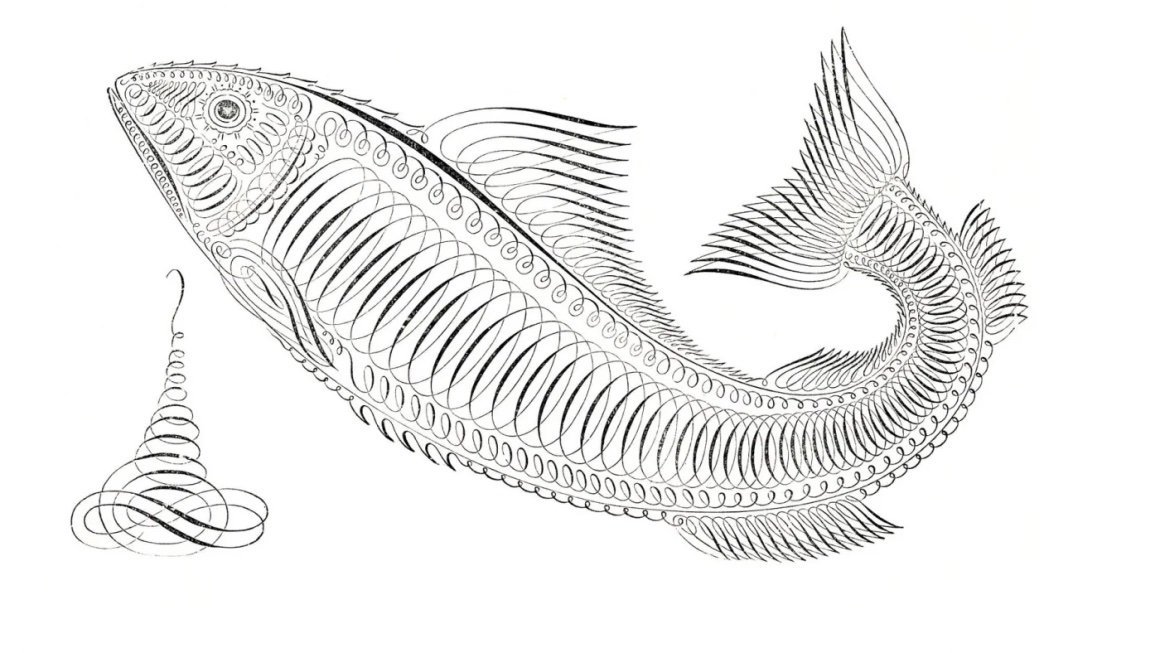(Dis)Connections: Katherine Bradford at Canada
By Christina McCausland
Friends and Strangers, Katherine Bradford’s current show at Canada, opens with a large yellow diptych depicting a group of six male-coded figures facing the viewer. The painting hangs alone in the gallery’s entryway and at first the standing men strike me as menacing — their postures signal an approach, as if they’re in formation — but the painting’s title, “Waiting Room,” suggests that these figures aren’t necessarily in league. Maybe, instead, they’re some of the “strangers” that the exhibition’s title refers to, aligned here in their shared non-task of waiting but otherwise standing as solitary subjects.
This kind of mutual isolation suffuses the figurative elements of the show. Bradford’s last solo exhibition at Canada, Fear of Waves (2016), dealt in vast and airy scenes — outer space and large bodies of water. The eleven paintings in acrylic that make up Friends and Strangers have not only come down to Earth but also seem cut off from the dreamy immensity that made up the worlds of Fear of Waves. Instead, these are visions of containment and longing, where even the water represented is in a tub, being poured into a glass, or, at most, ebbing around a figure’s ankles.
Several paintings in Bradford’s last show featured charming bathing bodies, whose dabbed-on bathing suits leant them a degree of humor and openness even as they appeared to be in life-threatening positions. Bradford has included one of these figures in a new painting, “Suits,” in which the faceless bather stands alone on an eggplant-purple plain as a larger and more detailed horizontal figure in a gray suit hovers overhead, near the top of the composition. The piece is one of several in the show in which bodies don formal attire, clothing in which they are roped in, tied down. The foremost figure in “Waiting Room” wears a suit, as does the figure hoarding puffy white balls in “Stock Pile.”
We can think of the formal suit as a kind of defense, one that complements the pyramid of white balls and the gun-like object atop which the figure in “Stock Pile” sits. Maybe that’s why he seems so at ease, leaning back in his chair, facing us as his arm hangs over the back. The gun covers the bottom third of the painting, in profile except for its barrel, which points out of the yolk-yellow ground and into the gallery. Menacing, but, like many of the paintings here, also funny, the 90-degree bend in perspective and the figure’s casual comportment granting the painting a certain cartoonish humor.
Horizontal figures like the one in “Suits” regularly cut across the top or bottom of the paintings in Friends and Strangers. It was hard for me to look at “Yellow Dress,” in which a faceless woman sits on a couch with her legs spread apart, without becoming suspicious of the man lying across the bottom of the painting. Stationed beneath her, he can read as a voyeur or upskirting creep. It helped me to instead imagine him as just a kind of shape, rather than a character—a horizontal line echoing the hem of the woman’s yellow dress across her yellow couch. Bradford’s style, which is not all that hung up on the divide between figuration and abstraction, mercifully allows for this sort of reading.
In the show’s other diptych, “All of Us,” a naked woman lies across the bottom half of the painting, face down on a bed of white spikes. Clothed figures surround her but don’t seem aware of her presence. This non-audience, all faceless, makes for a pleasing palette on the pepto-bismal-pink background: Their color-blocked outfits are expanded shades of pink, purple, red, and orange, the range in hues softening the anomie of the ignored woman in the center and the interpolation in the painting’s title.
The most comfortably social paintings in the show are “Wedding Circle” and “Lunch Painting,” paired also by their form — both are done in primarily red outlines on creamy ground. In “Wedding Circle,” we see part of a group of figures holding hands in a circle, some of them outfitted formally in suits or dresses and heels. (I thought the shoes in this exhibition really exemplified the easy, no-fuss humor of Bradford’s style.) “Lunch Painting” shows a group around a large table, many of the figures animatedly engaged in conversation — even the big fish on a dinner plate seems to be having a good time. Both of these paintings demonstrate what Bradford can do with a line; in the corner of “Wedding Circle” there’s a smiling bearded figure whose expression comes through in just an eye and a single-line profile, and at the far end of the table in Lunch Painting are three distinctly postured figures, each indicated with one eloquent line.
In “Lunch Painting,” we can also see traces of another painting extant beneath the dining scene, greenish shadows floating up beneath the table. This palimpsest, visible elsewhere in the show — blue stripes detectable through the white top layer in “All of Us”, something red or pink showing underneath the couch in “Yellow Dress” — suggests Bradford’s confidence in her process and lends the work a breezy, intuitive openness. If this world is more constrained than that of Bradford’s past work, the painting itself still indicates her unaffected sensibility, where making is a form of thinking.
About the author:
Christina McCausland is a writer living in Brooklyn.
